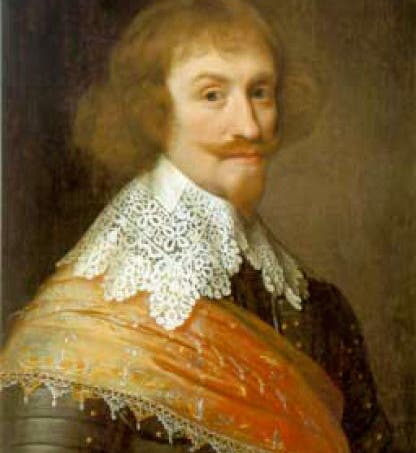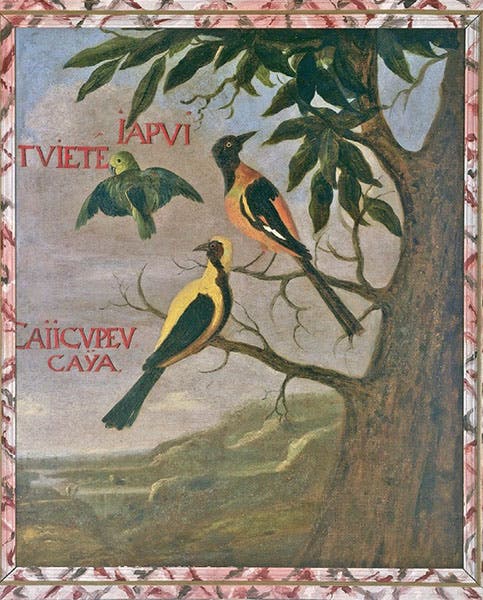Scientist of the Day - Johan Maurits of Nassau
Johan Maurits of Nassau, a Dutch nobleman and the cousin of Frederick William of Orange, was born June 17, 1604. Johan was the most successful colonial patron of his century, if not the entire early modern era, and it is amazing what he accomplished in just 7 years in Brazil. He was sent by the stadtholder, Frederick William, to Recife in 1637 to take charge of the sugar production facility there. Untypically, for such an enterprise in the 17th century, he brought with him talented artists and naturalists and told them to learn everything they could about the animals, plants, and peoples of Dutch Brazil. The artists, including Frans Post and Albert Eckhout, made hundreds of drawings and paintings, many of which still survive. We include in this post Frans Post’s painting of the Rio São Francisco, with a capybara standing on the shore (second image), as well as an Eckhout painting of three Brazilian birds, with their local names (third image).
The naturalists, Willem Piso and Georg Markgraf (or Marcgraf), described scores of new plants and animals, including the capybara, the coati, and the great anteater. The observations of the naturalists and the drawings of the artists were published in 1648 as Historia naturalis Brasilae, which we displayed in our Grandeur of Life exhibition in 2009 (see engraved title page, fourth image). Markgraf, who discovered, named, and studied the capybara and the coati, has made a separate appearance as a Scientist of the Day.
The Natural History of Brazil was the greatest single volume about an exotic country published to that time, and it would not be rivaled until the early 18th century, when volumes on Surinam (by Maria Merian) and Ambon (by George Rumpf) were published.
Johan returned to The Hague in 1644 and moved himself and his collections into a house that had been built for him while he was gone. It is now known as the Mauritshuis, the House of Maurits (see fifth image, below). After his death, the house was gutted by fire, restored, and finally bought by the state in 1820 to house works of art in the Dutch national collection. It has remained one of the premium art museums in Europe.
We did a post once on Rembrandt van Rijn, featuring his Anatomy Lesson of Dr. Tulp (1632), and another on Jan Vermeer, where his View of Delft (1659-61) was our lead image. Both of these paintings are in the Mauritshuis. So if you would like to see these or Vermeer's Girl with the Pearl Earring, you might want to pencil the museum into the itinerary of your next European visit, whenever that becomes possible. You can also see there a portrait of an older Johan, painted around 1668 (sixth image, below)
Dr. William B. Ashworth, Jr., Consultant for the History of Science, Linda Hall Library and Associate Professor emeritus, Department of History, University of Missouri-Kansas City. Comments or corrections are welcome; please direct to ashworthw@umkc.edu.




![Title page of Historia naturalis Brasilae, by Willem Piso [and Georg Markgraf], 1648 (Linda Hall Library)](https://assets-us-01.kc-usercontent.com:443/9dd25524-761a-000d-d79f-86a5086d4774/6bccdf99-024a-499a-bc14-98f59ada9498/maurits4.jpg?w=388&h=600&auto=format&q=75&fit=crop)






